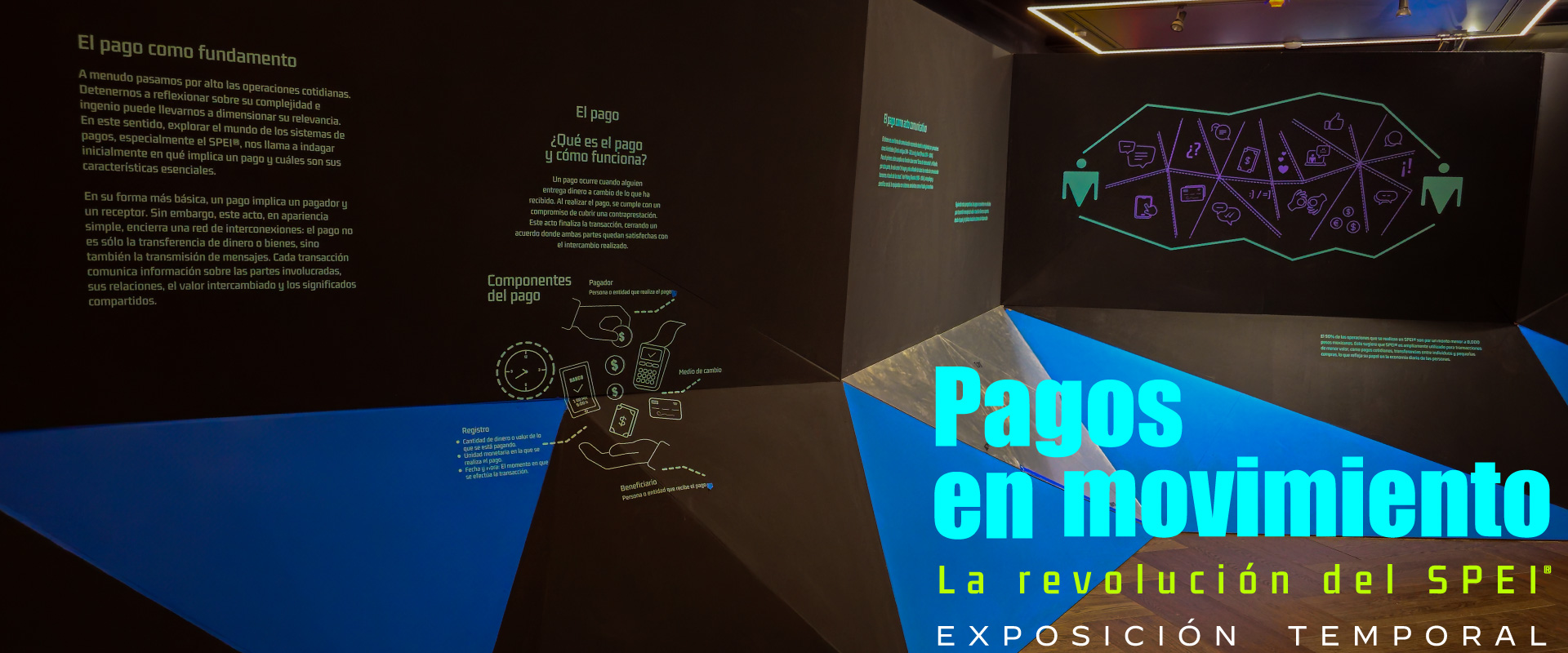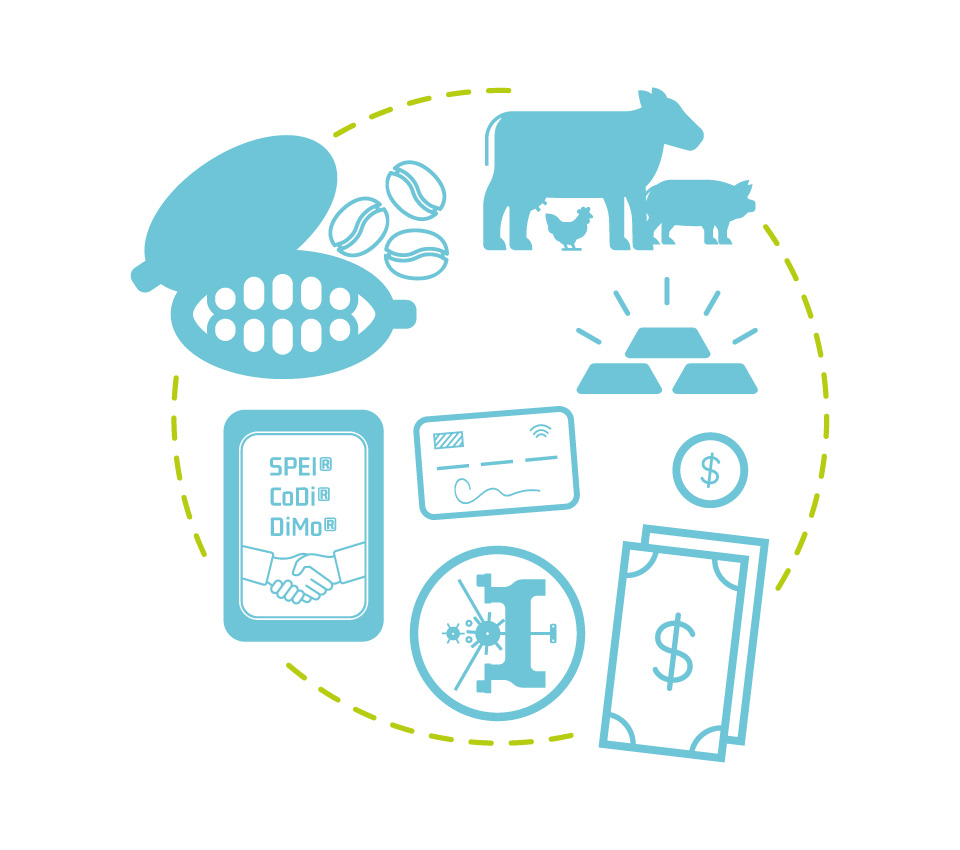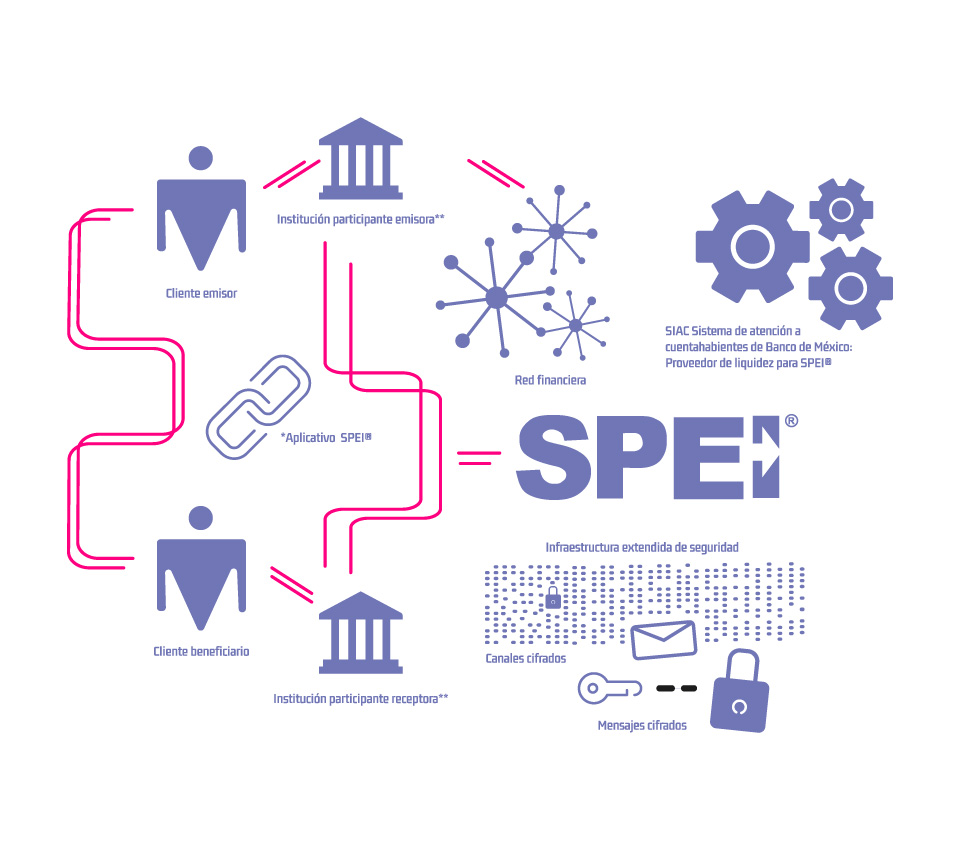


Payments on the Go. The SPEI® Revolution
Introduction:
This temporary exhibit commemorates the 20th anniversary of the Interbank Electronic Payment System (SPEI®), an innovation pioneered by Banco de México that has transformed the way we make payments, offering efficiency, speed, and security in a digitalized world.
Conceived as an accessible service for all, the SPEI® acts as a reliable channel backed by financial institutions, reducing processing times and strengthening security in transactions.
From the complex processes of bank deposits to the speed of current electronic transfers, the evolution of payment systems has closely followed the development of communication infrastructures.
The SPEI® has integrated into this technological environment, becoming a vital network that facilitates payment exchange among millions of users and entities, with an average of 107 transactions per second.


At its most basic level, a payment involves a payer and a payee. This seemingly simple act encompasses a network of interconnections: payment is not just a mere transfer of money or goods, but also involves transmitting messages.
Each transaction communicates information about the parties involved, their relationships, the exchanged value, and shared interpretations.
Both in its tangible and electronic forms, money is informative, symbolic and expressive, as it serves its communicative function, transmitting meanings within a social framework characterized by shared beliefs.
Money also has three fundamental functions: as a medium of exchange, as a unit of account, and as a store of value, underscoring its importance in the economic and social organization of human societies.
Remote transactions test the communicative and exchange potential of money, which has prompted the development of pathways to streamline the flow and mobility of payments.
The primary objective of payment systems is to settle payments between two geographically separated parties. Since ancient times, technological advances have also served to address the needs of remote payments.
In the history of means of exchange, pack animals, like horses, played a pivotal role in ancient trade, linking geographical regions and facilitating payments through the transportation of merchandise.
On the other hand, the 19th century postal services acted as a precursor to modern payment systems by providing infrastructure to conduct financial transactions remotely.
Furthermore, the invention of the telegraph in the same century paved the way for the first electronic transfers, enabling the swift authorization of payments between remote locations.


For decades, electronic/wire transfers have been essential for processing payments across long distances, driving the need for greater efficiency in their operation.
In response, central banks assumed the role of developers and supervisors of payment systems, a responsibility Banco de México has fulfilled for almost half a century.
From traditional methods such as telegraph and fax to the implementation of SPEI®, laws and protocols have been established to ensure their proper functioning.
The autonomy granted to Banco de México three decades ago marked the onset of a comprehensive reform to the country's payment system. This reform aimed to adapt to technological advances and to ensure secure and reliable access to electronic/wire transfers for most of the population through SPEI®.

The SPEI® began operating on August 13, 2004, integrating advanced infrastructures such as optical fiber, wireless networks, and satellite links. These advancements allowed establishing real-time connections and overcoming physical barriers.
The evolution of cell phones into smart devices expanded their capabilities, including the ability to make payments and transfers, thus enhancing the environment for SPEI®.
Banco de México has developed specific strategies for SPEI®, such as economic models and algorithms, ensuring its adaptability and efficiency in response to technological changes.
These measures address challenges such as real-time payments, variable funds management and their integration with smart devices. With advanced infrastructures and the evolution of mobile technology, SPEI® operates successfully in real time, overcoming physical limitations and facilitating instant connections.


The SPEI® is integrated into mobile devices and computers, making its complexity practically invisible yet essential. Sophisticated processes are carried out through information transmission waves to ensure successful transactions.
With a clear understanding of the causes and principles behind payment systems, the final section of this exhibit interactively recreates all the steps involved in a transaction using SPEI®.
This experience allows visitors to navigate sequentially from the origin to the destination of a funds transfer, exploring and understanding the complexity of the processes involved in this journey.
Activities for all audiences: dialogues, weekend activities and activations.
Mezzanine of Banco de México Museum.